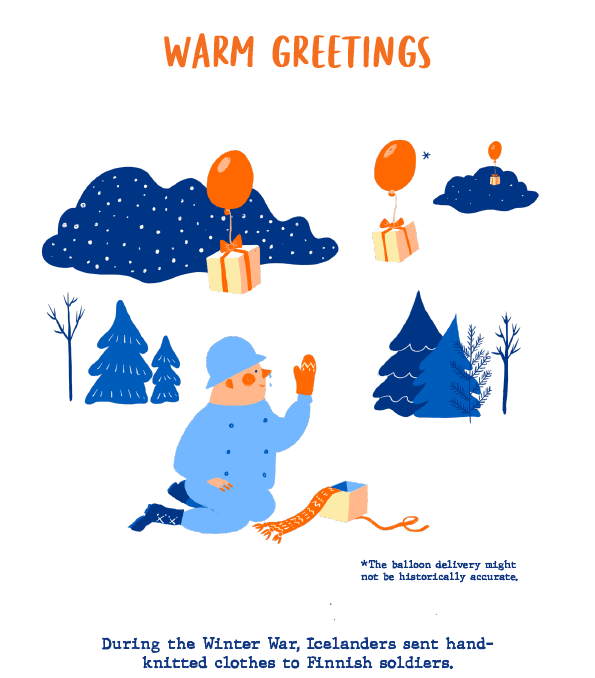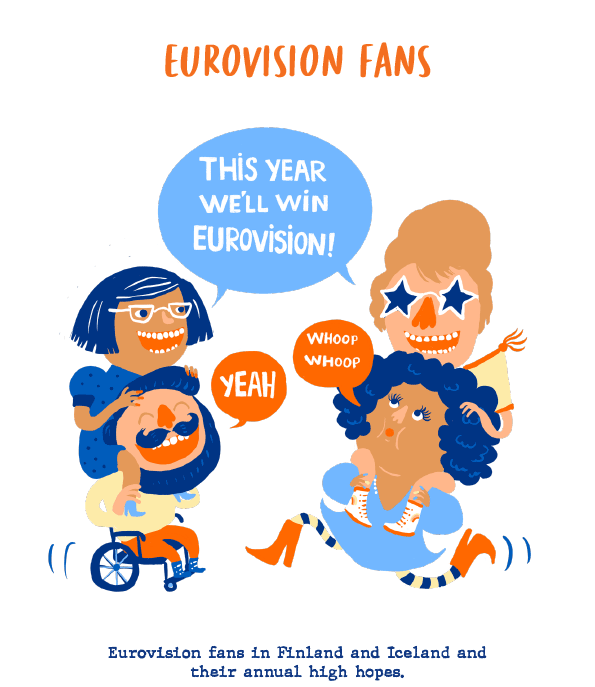At the core: People-to-people contacts
Direct contacts between persons, associations and organisations in Iceland and Finland are active, durable and straightforward. Contacts cover all areas of society and all age groups, topics and interests.
Over the years, the peoples of Finland and Iceland have reached out a helping hand to each other many times. Here are just two examples:
- Icelanders felt great sympathy for the Finns in the Winter war. The Icelandic Red Cross and the Norden Association organised a collection to which the response by the public was exceptional. It resulted in a major contribution both in cash and in kind (including knitted woolen mittens and socks). Finns were very grateful knowing that many gave from the very little the givers had themselves.
- Following the volcanic eruption in the Westman Islands in 1973 Finland participated in the effort to send wooden prefabricated houses to Iceland for the inhabitants who had to be relocated. The houses were assembled in Mosfaellsbær – and were of course equipped with a sauna!
Members of the Nordic family
Icelanders and Finns are part of the Nordic family, and the Nordic context largely defines who we are. Various cooperation networks and formats that strengthen the bonds between citizens in the Nordic countries have existed for a long time. For example, five Norden Associations celebrate their 100th anniversary between 2019 and 2024. The Norraena félagid in Iceland celebrates 100 years this year!
Friendship-towns in the Nordic countries is a long and important tradition, and cooperation is ongoing between many of them to this day.
Nordic cooperation
One of the key objectives of the official Nordic cooperation is to ensure that people-to-people contacts are as easy as possible. The freedom to live, work and study within the Nordic countries is continuously being advanced. The possibility for citizens to move within the Nordic countries has been facilitated by the common agreements that forward-looking politicians and civil servants set up in the 1950s:
- In 1952, passport-free travel was introduced between the Nordic countries.
- In 1958 a more clearly defined Nordic Passport Union was created – a forerunner to the Schengen agreement.
- The joint Nordic labour market came into force in 1954, a forerunner to the free mobility of labour that would later be one of the characteristics of the EU.
- In 1955, the Nordic Convention on Social Security was ready for implementation.
- The permanent treaty and basis for Nordic governmental co-operation, the Helsinki Treaty was born on 23.3.1962 – now celebrating 60 years.
The Nordic countries, including Finland and Iceland score high on international rankings in many fields, for example in the one that attempts to measure happiness. Countless theories have been presented to explain this. It is however hard to disentangle any single factor. One aspect must certainly be that we are doing things together and reinforcing each other!
Source: norden.org




